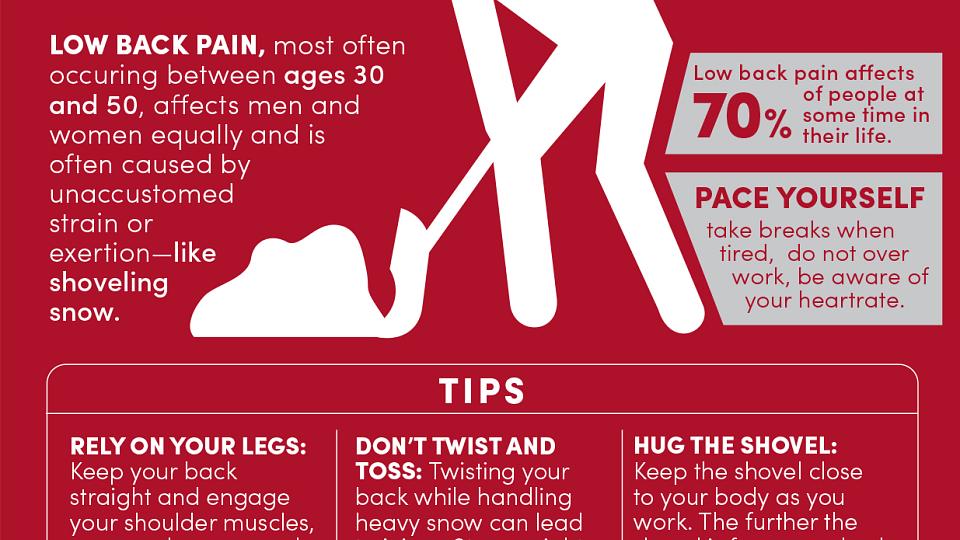
The Deal on Slipped Disks: What It Means and How to Treat It
Nearly everyone will experience back pain at some point in their life. It is the most common reason in the world for having to miss work. Despite its frequency, back pain can be debilitating and negatively impact your quality of life. Rest assured, most back pain episodes can be treated with home remedies and prevention strategies, rarely requiring surgery. However, if your pain is not going away and you’re also experiencing arm or leg pain, numbness, tingling, or weakness, it’s possible you may have a slipped disk
“A thorough physical exam with special maneuvers can raise high suspicion for a disk herniation,” says Brian Karamian, MD, a spine surgeon at University of Utah Health. “But the gold standard for diagnosis is an MRI. An X-ray will not show a herniated or bulging disk.”
Slipped, Herniated, Bulging: Making Sense of the Terms
Karamian says “slipped disk” is a colloquial term often used as a catch-all to describe both disk bulges and herniations. But the two are not actually one in the same, even though they may have similar symptoms.
Your spine consists of 33 vertebrae. In between each one is a disk, which is made up of an inner gel-like substance and a firmer outer layer, almost like a jelly doughnut. The disks act as shock absorbers and protect the inner contents of the spinal canal. A bulge results from the weakening of the tough outer layer, when the disk balloons out.
Now imagine that jelly doughnut again. While the doughnut is bulging out under pressure, no jelly has spilled out yet. A herniated disk results from a tear in the outer layer of the disk, when the inner gel-like substance leaks out into the spinal canal and can pinch nearby nerves.
Slipped Disk vs. Ordinary Back Pain
While most slipped disks occur in your lower back, or lumbar spine, it’s possible to have one in your upper back or neck, called the cervical spine. There are a few symptoms that point to a slipped disk as opposed to ordinary back pain.
Symptoms of a slipped disk in your lower back include:
- Persistent lower back pain
- A sharp pain that shoots down your leg and sometimes into your foot
- Numbness or tingling in the legs or feet
- Muscle weakness
Symptoms of a slipped disk in the cervical spine include:
- Neck pain, especially with movement
- Pain in between your shoulder blades
- Pain that shoots down your arm and sometimes into your hand
- Numbness or tingling in the arms or hands
- Muscle weakness
Treatment Options to Get You Back on Track
Slipped disks can be painful and interfere with everyday life. They can be frustrating, but most episodes will heal on their own without medical intervention. For pain relief at home, try taking an over-the-counter pain reliever such as ibuprofen or acetaminophen. Get plenty of rest, but avoid being stagnant for too long, as this can cause stiffness. You can also alternate applying heat and ice to the area.
However, if these at-home remedies aren’t cutting it after four to six weeks, or your symptoms get worse, there are more advanced treatments you can consider.
- Physical Therapy: Physical therapy is a common way to relieve pain but also to learn ways to prevent it from coming back. Your physical therapist will teach you exercises that you can do at home to relieve pressure on nerves, strengthen muscles around the injury, and improve circulation.
- Epidural or Nerve Block: This is a steroid injection directly into your spine. It will reduce inflammation on the larger nerves around the slipped disk and will relieve pain.
- Surgery: Rarely, there are patients who just can’t kick the pain from a slipped disk. When other treatments fail, a small surgery called a microdiscectomy is an option. This surgery removes a bulge or herniation to decompress the pinched nerve and relieve pain.
Preventing More Pain
Karamian says our disks are like tires on a car and inevitably wear down with increased age and use. This process is called disk degeneration. While this is unavoidable, there are lifestyle modifications you can make to keep your spine healthy and prevent more painful episodes.
Strong back, side, and abdominal muscles are key to preventing slipped disks because they help to protect your spine and prevent further injuries. Integrating exercises that strengthen and stretch these muscles, such as planks or bridges, at least twice a week can help keep your back pain at bay. A physical therapist can teach you these exercises and ensure you’re doing them correctly.
Other ways to prevent a slipped disk include:
- Maintain good posture.
- Bend your knees and keep your back straight when lifting something heavy.
- Lose weight if you need to, as excess weight puts strain on your back, particularly your lumbar spine.
- Quit smoking. Smoking can accelerate disk degeneration because it diminishes oxygen and blood supply to the disk.
While pain from a slipped disk can be disheartening, 90 percent of people with the condition fully recover with at-home remedies or minor medical care.
“When resuming activities, let pain be your guide and refrain from any significant bending or lifting,” Karamian says. “Acupuncture and massage are also modalities with evidence to support improvement in back and extremity pain.”
See your doctor if pain doesn’t subside in four to six weeks. But armed with healing and prevention strategies, you’ll likely be back on track to pain-free days in a short time.
Leg Pain in Older Adults Could Be Spinal Stenosis
Persistent leg pain that flares up while walking and fades with rest may point to a hidden condition of the spine. Orthopedic spine surgeon Darrel Brodke, MD, about how spinal stenosis can compress nerves, disrupt mobility, and quietly erode quality of life.



